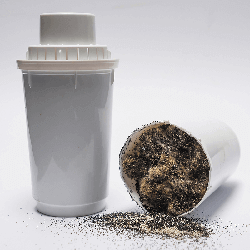Remediating PFAS Contamination
PFAS - What you need to know
Below are some of the most popular remediation methods. Questions remain however, such as how to deal with PFAS in filtering materials and whether or not there are potential byproducts of these methods, and if incineration releases PFAS into the air.

Granular Activated Carbon (GAC)
- an established and effective treatment for removing long-chain PFAS but further studies are needed on its effectiveness in removing shorter-chain PFAS. GAC can be reused after heat reactivation.

Reverse Osmosis (RO)
- an effective technology for removing contaminants by passing water through a semipermeable membrane. Pretreatment or nanofiltration may be required.

Biochar
- a carbon-rich material generated from heating biomass such as wood or manure in a low-oxygen environment. Biochar functions similarly to GAC and has been tested as a PFAS removal material.

Ion Exchange (IX) Resins
- shown to reduce PFAS concentrations to below detection limits and can be single-use or regenerable. Single-use resins appear to be more effective at PFAS removal.

Incineration
- thermal treatment of PFAS contamination in solids is believed to have a 90% removal rate at temperatures ranging from 842 - 1749.2°F and two studies in 2019 suggested low-heat treatments at 752°F achieved similar results.

Oxidation
- a method using electrical current passed through a chemical solution to oxidize PFAS contamination. PFAS removal ranged from 70% - +90% depending on the technique used.
This material is based upon work supported under a grant by the Rural Utilities Service, United States Department of Agriculture. Any opinions, findings, and conclusions or recommendations expressed in this material are solely the responsibility of the authors and do not necessarily represent the official views of the Rural Utilities Service.

